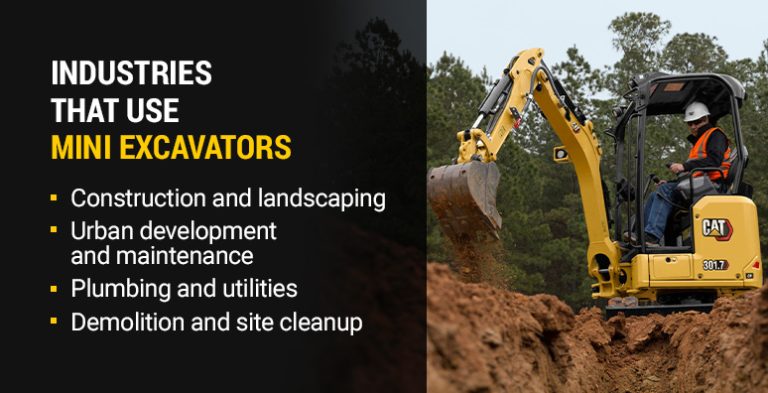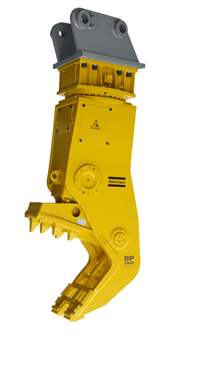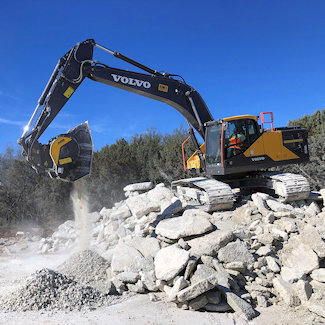What Is Bypass Construction? | Hydraulic Pulverizer
As the U.S. population continues to grow, more cars, trucks, motorcycles and buses clog our nation’s roadways. As of 2020, there were nearly 276 million registered vehicles in the country, representing an increase of approximately 50 million since 2000.
Bypass construction is one option for alleviating the congestion caused by all these vehicles and making our roads safer and easier to navigate.
What Is a Bypass?
A bypass is a newly constructed roadway segment designed to direct motorists around a city or central business district. The new road typically links from an existing highway and reconnects to it on the opposite side of the designated area.
Bypasses are sometimes referred to as “truck routes,” as their original purpose was to divert over-the-road tractor-trailers away from heavily populated areas. The American Association of State Highway and Transportation Officials (AASTHO) eventually changed the term to "bypass." However, you can still see truck route signage at older bypass areas.
What Are the Benefits of Bypass Construction?
Building a bypass can provide many benefits:
- Alleviates congestion: Perhaps the most obvious value of bypass construction is that it directs traffic away from population centers, letting local residents navigate a downtown area or business district more easily.
- Increases safety: Bypasses tend to spread out the traffic. This redistribution of vehicles can make roads safer for drivers and pedestrians.
- Reduces pollution: Diverting traffic away from a downtown area can contribute to cleaner air and a quieter environment.
- Attracts visitors: Fewer cars and trucks to contend with can make a town center more appealing to tourists and passersby, especially if it offers historic sites or other notable attractions.
Are There Drawbacks to Building a Bypass?
While bypasses often provide the best solution for alleviating traffic congestion, they’re not perfect. A highway construction project can cost millions of dollars. However, the recently passed Infrastructure Investment and Jobs Act should help communities defray the costs of a new bypass. The Act appropriates $1 trillion in federal infrastructure funding, with much of it earmarked for rebuilding highways and bridges.
A bypass built too close to a population center could result in more noise instead of less, and residents may experience inconveniences during the construction phase. The new roadway could also hurt downtown businesses by limiting their exposure, especially in cities with little else to offer prospective visitors.
Choosing the Right Equipment for Bypass Construction
If you’re a road construction contractor, the good news is that the new infrastructure law should provide substantial opportunities for growing your business. If you haven’t already, now is an excellent time to start planning for the inevitable increase in demand to ensure you’re in the best position to land more projects.
Renting construction equipment offers a convenient, cost-effective solution for ramping up your fleet. Examples of the machines you should consider adding include:
- Motor graders: These machines feature a long blade for creating flat surfaces during roadway grading projects.
- Asphalt pavers: This equipment is essential for laying, flattening and performing minor asphalt compaction.
- Cold planers: A cold planer is a milling machine that removes existing asphalt and concrete for recycling purposes.
- Remixing transfer vehicles: These vehicles enable you to remix hot asphalt before feeding it to the asphalt paver’s hopper, saving time and maximizing paving results.
- Road reclaimers: Use this equipment to stabilize a crumbling roadway by pulverizing the top asphalt layer and blending it with the underlying base material.
- Road wideners: Implement these products to widen roadways and create shoulders. They consist of a hopper for holding dirt, stone and gravel, plus a hydraulic belt that distributes the materials on either side of the machine.
- Windrow elevators: These machines pick up hot mix asphalt (HMA) and transfer it to the asphalt paver’s hopper for spreading.
- Variable message boards: Maintaining safety is paramount at any road construction site. These electric signs deliver messages to passing motorists to alert them of the potential hazards and redirect them as needed.
- Arrow panels: Arrow signage is another crucial safety feature at bypass construction sights. They reduce the motorists’ confusion by pointing them in the appropriate direction.
The Cat® Rental Store Can Meet All Your Bypass Construction Equipment Needs
Are you looking for reliable equipment for bypass construction projects? The Cat® Rental Store near you has everything you need to get the job done. We carry an extensive inventory of roadwork machines at competitive short- and long-term rates. We also provide excellent service throughout the rental process, including expert product selection assistance, on-site maintenance and repairs, and much more.
Call us at 1-888-RENT-CAT or contact us online for additional product and pricing information.
Find The Cat Rental Store Near You



